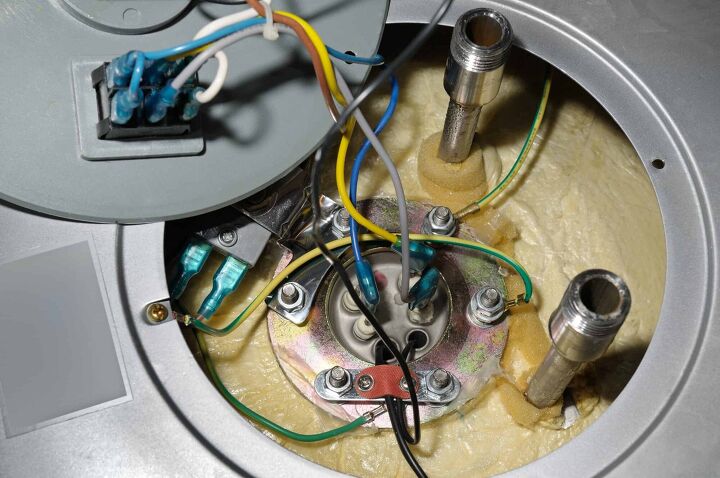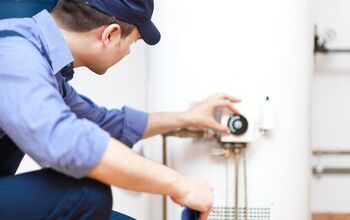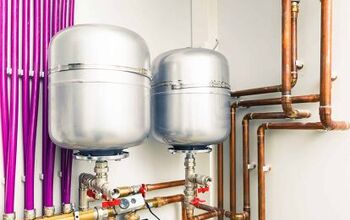How To Install Flexible Water Heater Connectors

When you’re working with a water heater, you want to make sure that the chance of leaks is as small as possible. One of the better ways to make sure that you keep your water heater in working condition is to take time to replace connectors once in a while. Flexible water heater connectors are best, but how do you do this without botching the job?
When you are attaching the connectors, make sure to have your water heater turned off and drained prior to working on your tank. Choosing the right connectors is a must. Remove the old connectors, and then replace them with new ones. Secure them in, and turn your heater back on.
If you are looking to add new connectors, you probably already know it’s going to be a task and a half. Don’t worry, we’ve got your back and are here to help guide you through the process.
Do You Need to Hire a Plumber?
Get free, zero-commitment quotes from pro plumbers near you.

Do You Have The Right Water Heater Connectors?
Before you attempt anything, we urge you to make sure that the water heater connectors you have actually been made for your heater’s size. Typical water heater connectors will measure between 12 and 24 inches in length. We suggest using a high precision measuring device with some serious flexibility to find out the length of the connector you need, as well as the diameter of the bolts at each end.
If you choose the wrong length, the flow of the water in your home can and will be compromised. You don’t want that. Now that you are ready to get started, grab a wrench and your connectors, ’cause it’s time to get to work!
How Much Do Flexible Water Heater Connectors Cost?
While this can depend on the brand and the store that you bought it, you shouldn’t expect to pay a fortune for your connectors. Typical flexible water heater connectors will cost between $10 and $40, with much of the price being based on the material and the length of the connector that you’re buying.
If you choose to hire someone to install the new connectors, the fees will get a little higher. A typical plumber will cost between $75 to $100 to install new flexible connectors. This entire process takes under an hour of labor, but most will still charge a minimum of $60 for the drive out, plus parts. Therefore, it’s cheaper to just do things on your own.
How Often Do Water Heater Connectors Need To Be Replaced?
This varies depending on the water quality you have, as well as other factors too. A good rule of thumb is that you should replace most plumbing fixtures surrounding the water heater every four to five years.
Do I Need To Hire Someone To Attach New Flexible Connectors To My Water Tank?
Many people choose to call a plumber or HVAC technician for any type of repair involving their water heater, and that’s their prerogative. It’s what they choose to do in order to feel secure in their home’s workmanship or because they don’t feel like they can (or want to) do this repair on their own.
However, it’s safe to say that adding new flexible connectors to your water heater is not going to be a difficult project. Even beginners in the DIY world can do this safely without having to worry that they did something wrong. It involves minimal tools, which means you also don’t need to be a handyman to do things right.
How To Add New Flexible Connectors To A Water Tank
Now that you have the right connectors, you need to make sure that you have all the other tools you need too. This will include a wrench and thread-seal tape. If you have those, just follow the directions below:
- Start off by shutting off the power or gas to your water heater. This should be the first thing you do for any tank. Keeping the power on can lead to injury, electrocutions, or a short-circuit.
- Shut off your water heater’s supply line and drain the tank. After you shut off the water supply, just open up a hot water faucet in your home to completely drain the tank. Once no more water remains, close the spigot and lift the lever of the pressure valve to release any additional pressure in the tank.
- Loosen the nuts on the old connectors. Use a wrench for this, and do it on both the water heater’s side and the supply line side. Pull out the old connectors, and throw them away. They aren’t usable anymore, anyway.
- Grab a rag or a cloth, and wipe the connector threads at the top of the tank and at the supply side. This removes the gunk that has accumulated over the years. If they have old thread-seal tape, remove the tape and clean the connectors again.
- Once you’ve done that, apply two layers of thread-seal tape to the connectors. As the tape’s name suggests, this will help avoid leaks in the future.
- Install the new connectors. You can slide them on and tighten them using your wrench and some nuts at the base of the connections.
- Give your set up a test run by turning on your water faucet and the supply valve. If the water is flowing well and you don’t see any leaks, you did the job right and you shouldn’t have any problems.
- Finish off by turning your water heater on again. Now that you’ve made sure that your work is legit, you can just turn the heater back on again. Enjoy your new plumbing!
Do You Need to Hire a Plumber?
Get free, zero-commitment quotes from pro plumbers near you.

Related Questions
Why should I get flexible water heater connectors?
Traditional connectors are great, but flexible connectors offer a lot more versatility. They are great for people who are worried about having enough space to work on HVAC kits, and are ideal for fitting into smaller HVAC closets. If you aren’t sure whether you should get flexible connectors, ask a plumber or refer to your heater’s manual for help.
What’s the best temperature to set my water heater?
Though this is partly a matter of personal preference, experts agree that the best water temperature setting is 120 degrees Fahrenheit. This gives your water enough excess heat to travel through your plumbing and still deliver piping hot water at a moment’s notice. This is a preset option on most new models. On older models, setting it to medium will work fine.
Why does my home keep running out of hot water?
Assuming that you never had this problem before, finding yourself in constant need of more hot water tends to be a sign that your water heater is in need of repairs. In many cases, not getting any hot water whatsoever could be a sign that your heater is failing. To find out what is the case for your heater, contact a plumber who can troubleshoot the issue for you.
What size tank do you need for a typical home?
This is often best decided by a plumbing expert, but most homes do well with a 20 to 50-gallon water heater. If you have a larger home, a water heater that’s 60 to 80 gallons may be a better choice. Some extremely large homes also have multiple water heaters to help mitigate water needs.

Ossiana Tepfenhart is an expert writer, focusing on interior design and general home tips. Writing is her life, and it's what she does best. Her interests include art and real estate investments.
More by Ossiana Tepfenhart



























